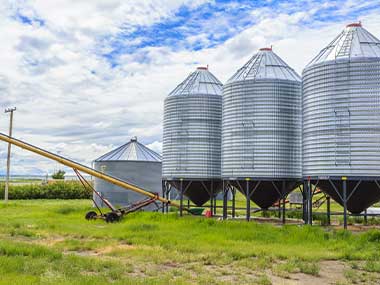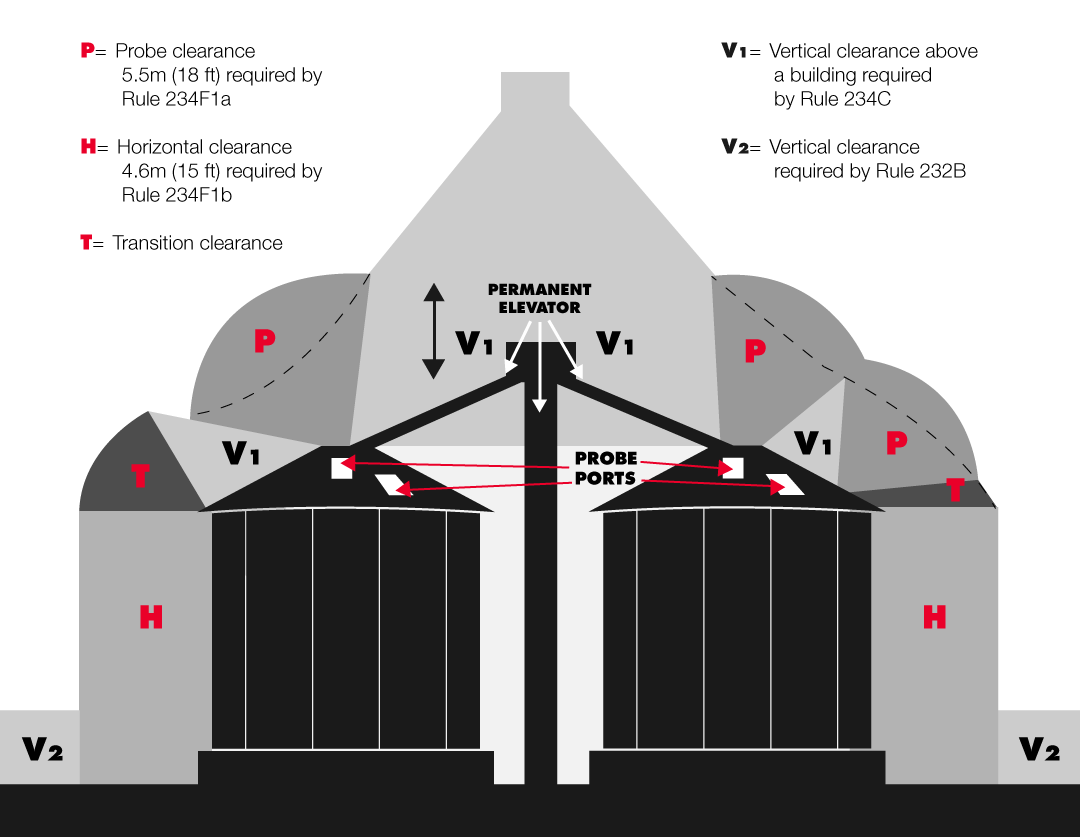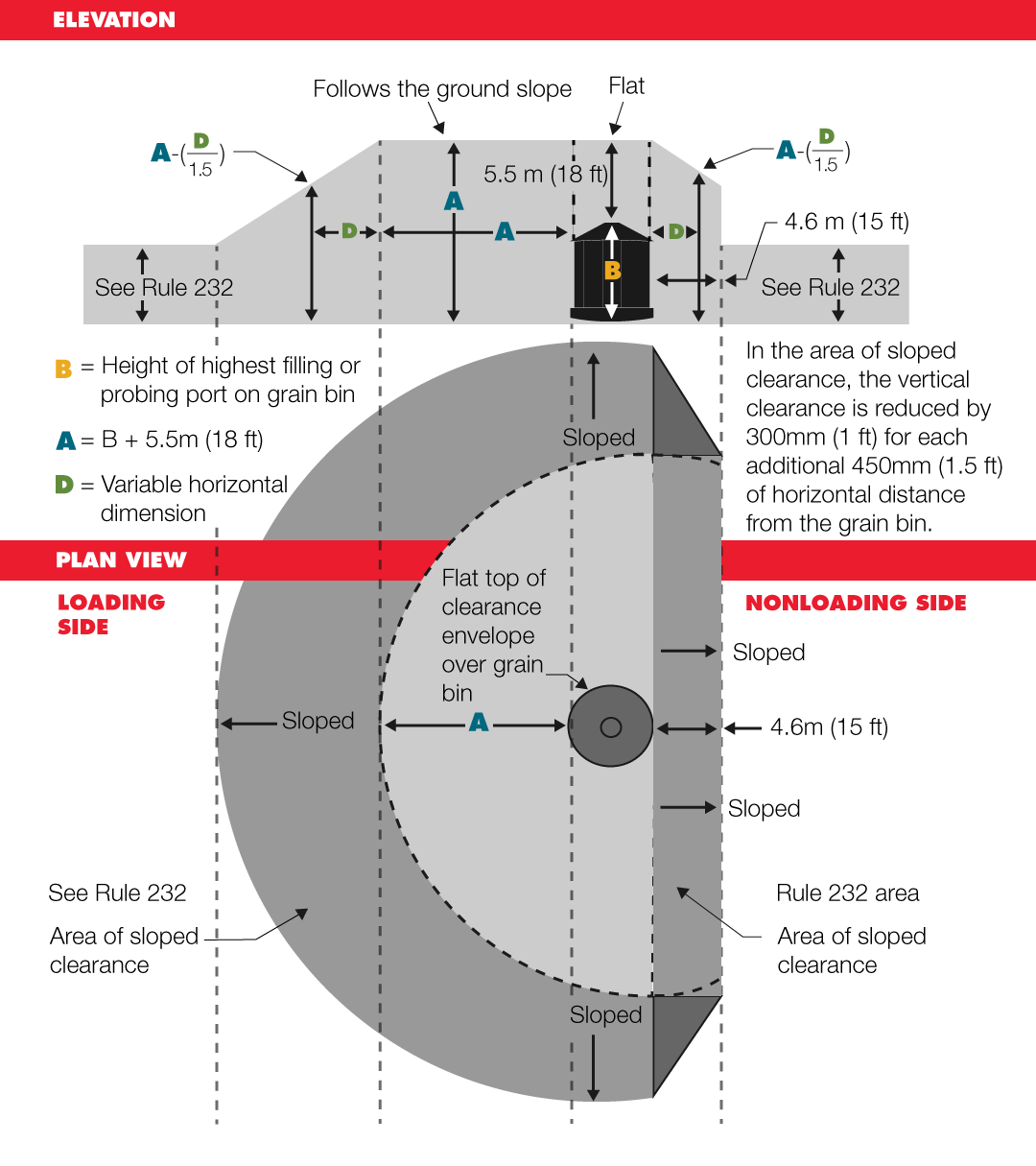Farm and Grain Bin Safety
Working near modern utilities requires care and caution, whether you’re on a city block or out on a farm. If you’re a farmer, farm lender, grain bin merchant, or city and county zoning official, being aware of the hazards and standards for constructing farming equipment and structures helps you do work safely.

Grain bins
Constructing or operating a grain bin too close to electric lines runs the risk of burns, shock or electrocution. Iowa Administrative Code (IAC) Section 199-25.2(3)b specifies the minimum safe distances required between grain bins and electrical lines in accordance with American National Standards Institute (ANSI) C2-2017 “National Electrical Safety Code,” Rule 234F. The envelope – the area of clearance around a grain bin – needs to be calculated considering vertical, horizontal and transitional zones to ensure a safe distance.
Failure to follow proper minimum clearances may result in hazardous working conditions and denial of service. Prior to planning modifications to or construction of new grain bins, contact us to discuss the specific location. We may be able to assist with possible conflicts with nearby electrical facilities.
Clearance envelope for grain bins filled by permanently installed augers, conveyors or elevators

Clearance envelope for grain bins filled by portable augers, conveyors or elevators

Privately owned utilities
Before we begin a MidAmerican gas or electric utility project, we have underground public utilities marked so that our crews can work safely and avoid damage. However, One Call services will not locate your privately owned underground services. Common privately owned utilities in agricultural settings may include:
Before we begin a MidAmerican gas or electric utility project, we have underground public utilities marked so that our crews can work safely and avoid damage. However, One Call services will not locate your privately owned underground services. Common privately owned utilities in agricultural settings may include:
- Septic pipes or fields
- Privately owned water lines or electrical wiring to outbuildings such as sheds, detached garages, houses or barns
- Geothermal lines
- Field tile lines
- Well systems
You are responsible for having privately owned underground utilities on your property marked in the area where work is occurring once you are notified of an upcoming project. We recommend searching for a private locate service in your area or contacting the company that installed the equipment for assistance. MidAmerican is not responsible for damage to privately owned utilities that are not marked.
Harvest operations
Many common safety tips apply to farming, but in many instances, farmers must be mindful of additional safety risks when planning their operations. For example, during harvest season when augers are in use, it’s important to lower augers completely before maneuvering near power lines. Harvest season is the most dangerous time of year for utility-related farm safety incidents. Review our harvest season safety tips before beginning your work each year.
Harvest operations
Many common safety tips apply to farming, but in many instances, farmers must be mindful of additional safety risks when planning their operations. For example, during harvest season when augers are in use, it’s important to lower augers completely before maneuvering near power lines. Harvest season is the most dangerous time of year for utility-related farm safety incidents. Review our harvest season safety tips before beginning your work each year.